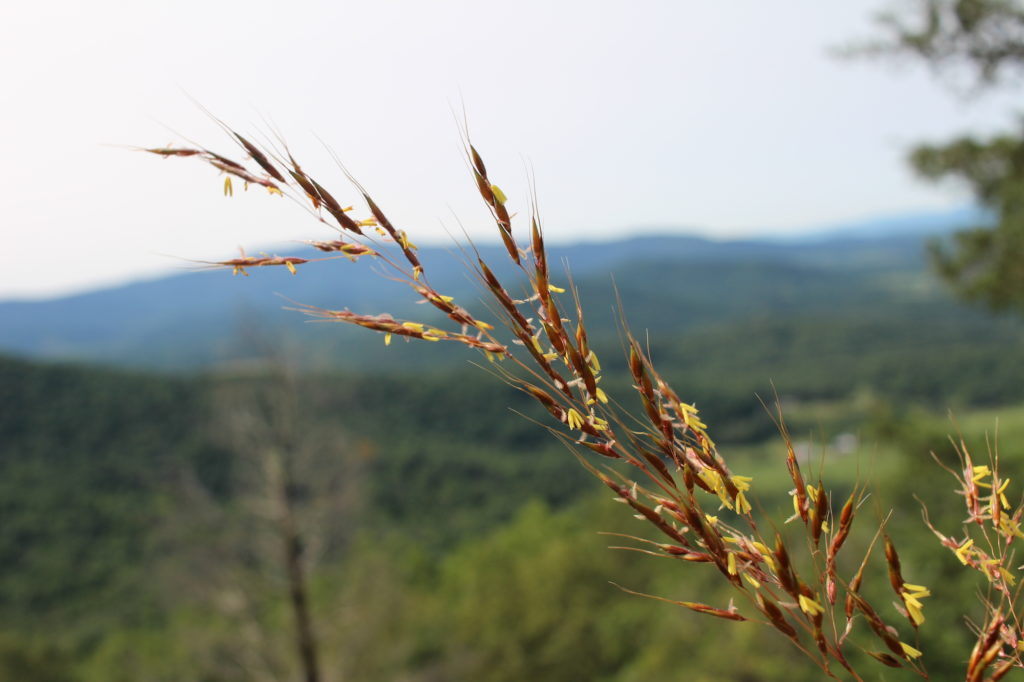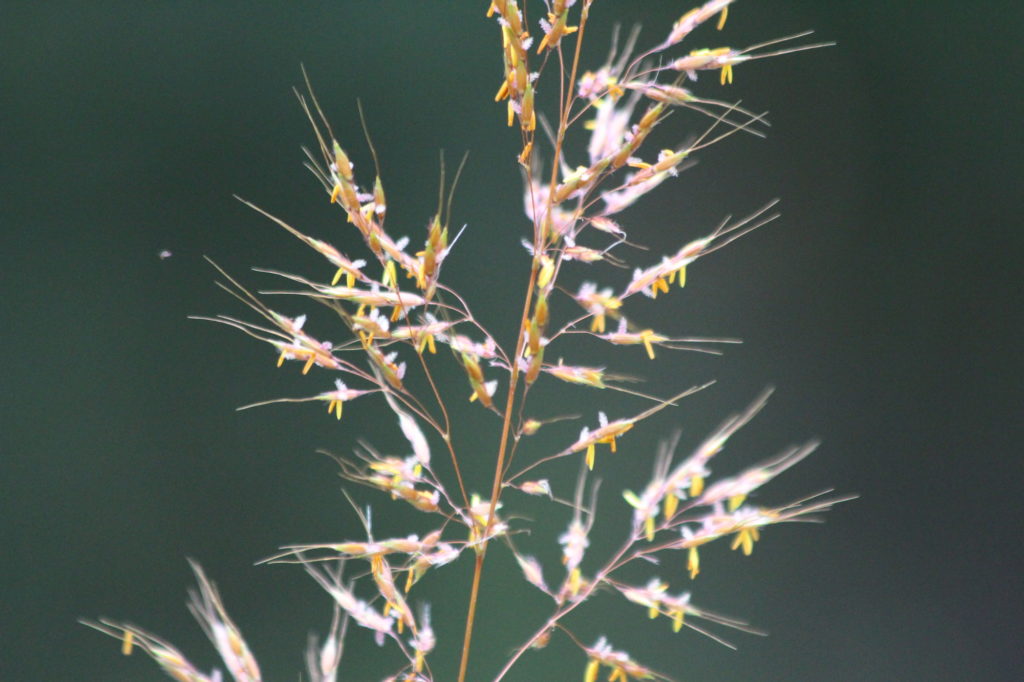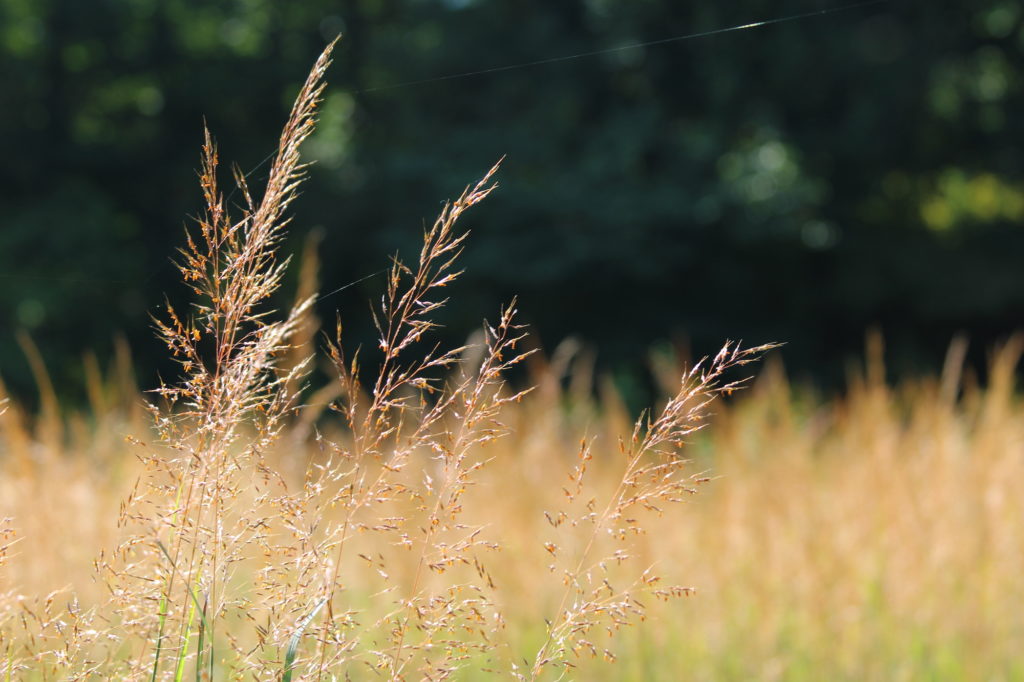
What’s in Bloom | Indian Grass
September 29, 2020
Indian grass (Sorghastrum nutans) is an attractive warm season perennial bunchgrass native to Virginia that can grow over 6 feet tall. The bright yellow panicle flowers bloom from late summer to mid fall and are cross pollinated by the wind. The species prefers well drained soils in full sun but can tolerate a wide range of conditions. Indian grass is often found alongside big bluestem (Andropogon gerardii) and switchgrass (Panicum virgatum) in tallgrass prairies.
Habitat disturbance, including fire and heavy grazing, help maintain this species in areas where secondary succession would encroach on grassland habitats. Longleaf pine forests also tend to harbor healthy populations of the grass due to the pine’s fire-adapted natural history. Indian grass is resistant to fire and grazing and will regrow vigorously after disturbance events.
Benefits to Biodiversity | S. nutans provides wildlife with valuable cover and the seeds make a nutritious food source for songbirds and small mammals — especially in the winter months when resources are limited. Many grassland birds utilize the bunchgrass as nesting cover during the breeding season. Various arthropods including grasshoppers and butterflies use Indian grass as a host plant, indirectly benefitting insectivorous animals. Indian grass can be used for reclamation of old mining sites and provides grazing for livestock and wildlife in the summer.
Sources: Illinois Wildflowers, Flora of Virginia. Written content contributed by Erin Saylor.

